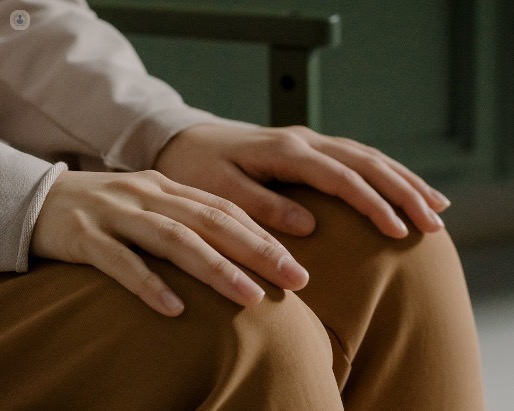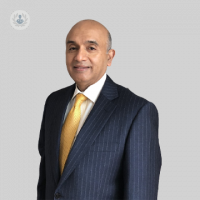Partial knee replacement: is it worth it?
Written in association with:A partial knee replacement is used to replace specific parts of the knee. It offers a wide range of benefits, such as the preservation of healthy bone and ligaments, as well as improved range of motion.

We recently spoke with the highly experienced consultant trauma and orthopaedic surgeon, Mr Dipen Menon, to discuss partial knee replacement. In this article, we look at how it’s carried out, what the benefits are, who is able to have it and how to tell if you’re going to need this procedure. We also discuss when total knee replacement might be necessary; read on to find out.
When is partial knee replacement performed?
Knee arthritis generally starts as cartilage damage affecting either the inside of the knee (medial), outside of the knee (lateral) or behind the knee cap (patella-femoral). This is called partial or unicompartmental knee arthritis. Partial knee replacement surgery involves replacing the damaged tissue, cartilage and bone from just the affected part of the knee with an artificial implant. The rest of the knee is preserved and ligaments are left intact.
The use of partial knee replacement (over total knee replacement) offers many advantages. Partial knee replacement:
- Results in knee function that is more physiological, this has been confirmed by many studies.
- Allows for rapid recovery, the hospital stay is much shorter, and patients are better able to descend stairs.
- There is decreased risk of thromboembolic events and less requirement for blood transfusion.
- It preserves a better range of motion at the knee and revision (re-do) surgery is usually easier.
- Since the surgery for partial knee replacement requires a smaller incision, there is generally an earlier return to better function and less post-operative pain.
Who is suitable for partial knee replacement?
The success of a partial knee replacement relies on an appropriate selection of patients. It is important that the arthritis is confined to only one side of the knee - inside or outside (medial or lateral tibio-femoral compartments) or is just behind the knee cap. If there is extensive cartilage damage in the other parts of the knee, then partial knee replacement is not recommended.
The anterior cruciate ligament plays a very important role in the successful function of a partial knee replacement and its integrity, therefore, is paramount before contemplating partial knee replacement surgery. There is a risk that loss of ACL function will lead to premature failure of implanted components. All patients who satisfy these criteria are offered a partial knee replacement.


When is total knee replacement necessary?
In a partial knee replacement, only the diseased medial or lateral tibiofemoral compartments of an isolated patellofemoral joint is replaced. In total knee replacement, both medial and lateral tibio-femoral joints are replaced with or without resurfacing of the patella. All patients who present with knee arthritis should be considered for partial knee replacement however, if they have any of the above contraindications, then total knee replacement is required. This generally means that the arthritis has progressed to other parts of the knee and/or the cruciate ligament is not working. In the United Kingdom, TKR is currently performed in more than 90 per cent of cases presenting with knee arthritis mirroring similar findings in other countries.
If you´re considering a knee replacement, we recommend getting in touch with an expert consultant trauma and orthopaedic surgeon such as Mr Menon. Visit his Top Doctors profile today for information on appointment availability.


